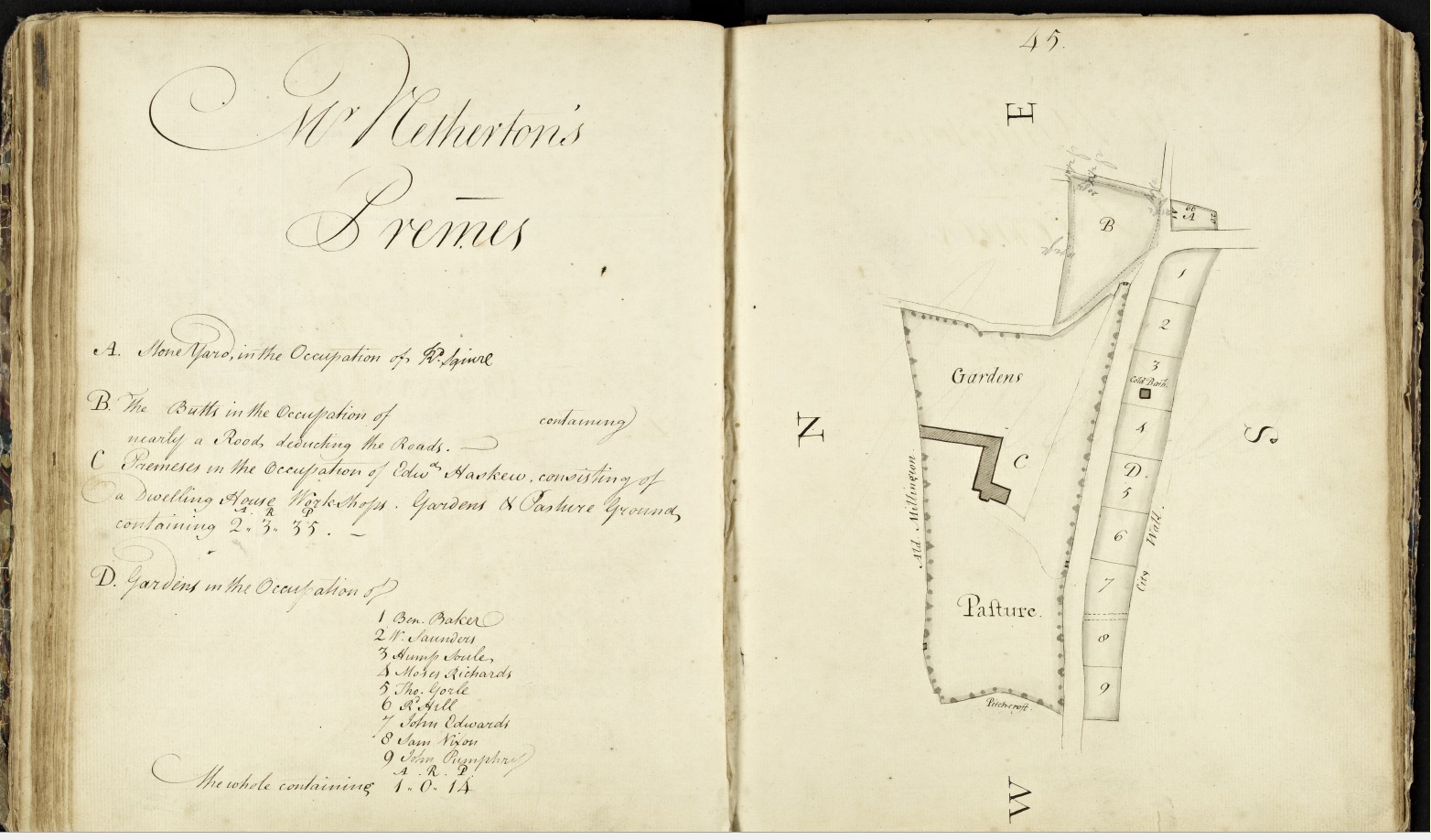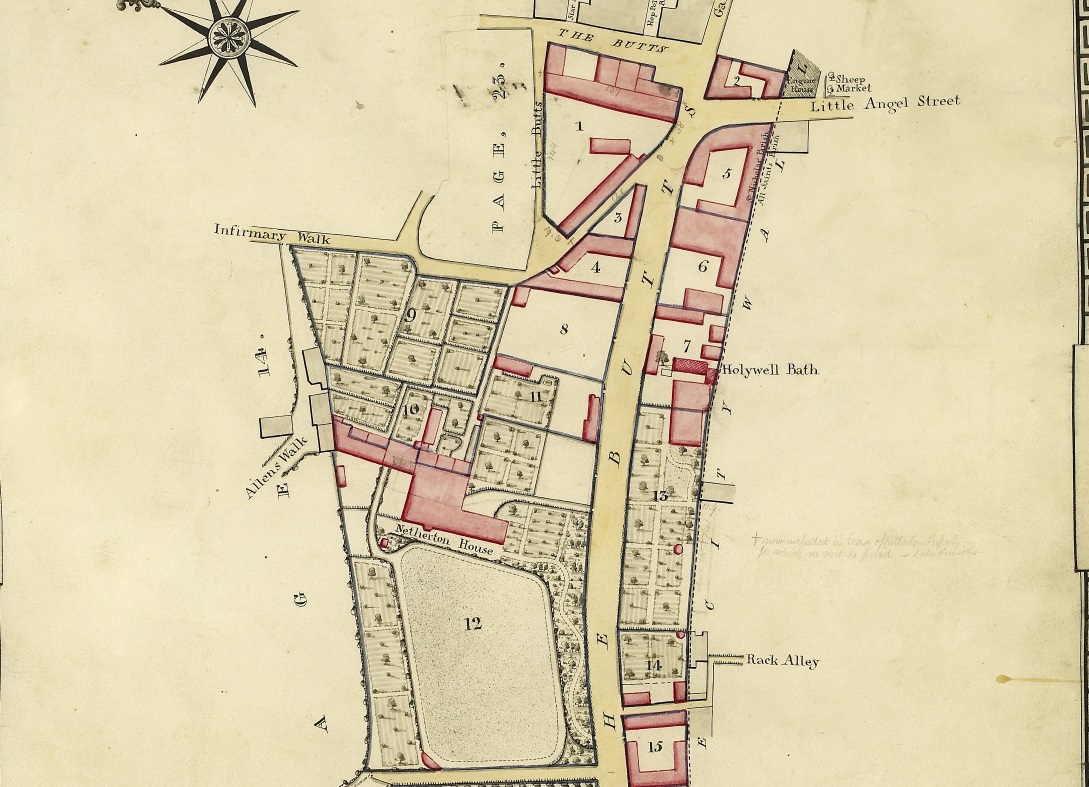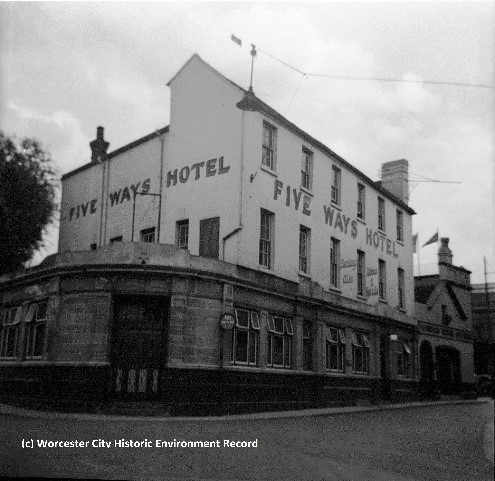Finials, Farriers and Five Ways
- 24th April 2020
A short History of a corner of a Worcester Street
The Butts is a long straight road which runs almost from the River Severn to Foregate Street, Worcester’s main thoroughfare.
The Butts stops abruptly and becomes Shaw Street which continues up to Foregate Street. The Butts used to bear to the left at this point and run along what is now called Farrier Street. Just before this left turn on the same side is a small walk way called Infirmary Walk. And finally, opposite there is a road to the right called Angel Place. So, we have The Butts, straight up running into Shaw Street, Farrier Street and Infirmary walk to the left, Angel Place to the right, creating five ways.

Ground Plan of the Houses etc., Held by Lease under the Corporation of Worcester. Reference b496.5 BA 9360 parcel C1 item 1
On the corner of The Butts and Angel Place in 1771 was a stone yard and occupied by Richard Squire a Stone Mason and Sculptor. He worked on Worcester All Saints which was built between 1738 and 1742 and, according to Pevsner’s volume on the ‘Building of Worcestershire’ he probably designed the church as well. Richard Squire went on to work on several churches throughout the county. He still occupied the stone yard in 1781.

Corporation of Worcester Book of Plans and References, 1824. Reference b496.5 BA9360 parcel C1 item 3
By 1824 the land was owned and occupied by a William Weaver listed as a Blacksmith and shoer of Horses or Farrier. On the image of 1824 the corner plot is shown as number 2. The entrance to his yard was directly opposite where The Butts turned left, could this be the reason that road was renamed Farrier Street? William Weaver was listed as still listed as being there on the 1841 census. But the business had gone, and the buildings were empty by the time of the 1851 census.
When the 1861 census was published a William Wainwright is in residence on the corner plot. The 1861 census tells us that he was a bricklayer employing 8 men and 2 boys.
The Worcester City Licensed Victuallers Accounts states that in 1856 a William Wainwright had applied for and was granted a victuallers or publican’s licence to sell ale. In the same account book a year later, William Wainwright is listed as the licensed victualler of The Five Ways. Could he, as a builder have bought the site and turned it into a public house?
Reference taken from The Recognisance of Victuallers b496.5 BA 9360 parcel 2 volume 3
Dated 1819 – 1860.

Five Ways Hotel 1951, courtesy of Worcester City HER
The Five Ways public house became the Five Ways Hotel and in various forms has remained on this corner until its closure in 2009. If you look down Angel Street towards The Butts a painted sign advertising The Five Ways Hotel can still be seen on the side of the building.
This small corner of Worcester is now the coffee house called Francini’s Café de Columbia.
Angie Downton, Senior Archives Assistant
Very interesting, thanks.